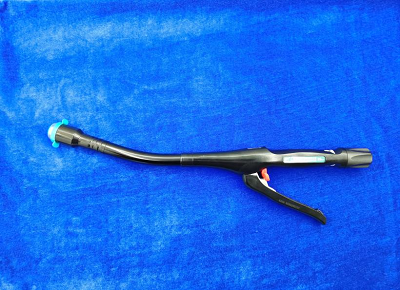In recent years, the progress of surgical instruments has greatly promoted the development of modern surgery. In the field of gastrointestinal surgery, the emergence and popularization of disposable staplers have brought gastrointestinal anastomosis to a new stage. Compared with traditional manual sutures, Reconstruction of the digestive tract with a disposable stapler can significantly shorten the operation time, greatly reduce tissue damage and bleeding, and thus reduce the average hospital stay. At present, more and more surgeons are more willing to choose mechanical anastomosis in clinical work. However, complications related to the application of disposable staplers in gastrointestinal surgery occur from time to time. Surgeons are one of the three major factors affecting gastrointestinal anastomosis. They themselves have a grasp of the choice of disposable staplers and the operation technology. It plays an important role, and the success of the anastomosis is closely related to it. This article will talk about my views on the selection and rational use of disposable staplers in common surgical procedures for gastric and colorectal surgery.
Classification of single use skin stapler
There are many types of disposable staplers. According to the working principle, they are divided into pressing type and staple type. According to the shape of disposable stapler, they are divided into linear cutting stapler, circular cutting stapler, arc cutting stapler, button-shaped stapler and paper clip. Shape anastomosis clip.

The use of disposable stapler in open surgery
(1) Selection and application of disposable staplers in gastric surgery
1. Proximal gastrectomy: In the operation, a circular stapler (25-26mm) is generally used for esophagogastric anastomosis, and a linear cutting stapler is used for stomach dissection. Studies have shown that 25-26mm anastomosis is used for esophagus and gastrointestinal anastomosis. The surgical instrument can reduce the occurrence of postoperative complications, but this is not absolute. The surgeon must determine the type of the stapler according to the inner diameter of the esophagus. It is good for tissue shaping and reduces anastomotic bleeding. Do not forcefully pull when the stapler is retracted, especially when the incision is not complete, the forceful retraction may easily lead to anastomotic tissue avulsion.
Due to the deep anatomical position of the esophagus, the visual field during the operation is poor, the anastomosis operation is more difficult, the severed end of the esophagus is easily torn off, and the incidence of postoperative anastomotic leakage is higher. Scholars suggest that one-time use of staplers to complete the digestive tract reconstruction Later, the anastomosis was manually sutured and reinforced; however, this has been controversial. Theoretically, the suture reinforcement makes the anastomosis more complete and can reduce the occurrence of postoperative anastomotic fistula, but in fact, excessive suture reinforcement causes the anastomosis tissue to be embedded. Many, easy to form anastomotic stenosis after operation. The author’s experience is that the choice should be based on the intraoperative anastomosis. If the visual field of the esophagus is clear during the anastomosis, the esophagus is completely free and the hemostasis is sufficient. The effect of the anastomosis is satisfactory. Suture reinforcement suture, generally choose absorbable suture (model 3-0 or 4-0), because silk anastomosis has a high incidence of foreign body reactions, it is easy to form ulcers, edema and bleeding in the anastomosis, if you use silk thread, you can use 3- Line 0 or 1.
Although gastric reflux occurs from time to time after esophagogastric anastomosis, which affects the quality of life of patients, the symptoms are not obvious in most patients, so this operation is still often used in clinical practice.
Post time: Nov-24-2021





